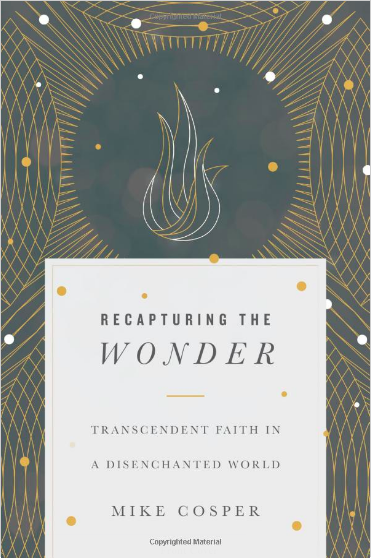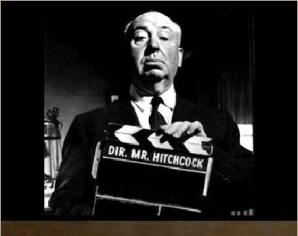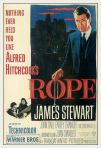
Christmas has come and gone even though “the season” has a few more days left before we roll the calendar over and begin anew. New Year’s Eve and New Year’s Day, for me, has been somewhat of an evolution. Early on I stayed with my grandparents while my mother was out. (It is, after all, an adult holiday.) That gave way to yet another excuse — as if one was needed — to be out with friends as long as the night would hold through my teens and even early twenties. Early in our marriage we mostly stayed in as I wrote New Year’s off as the most overrated of holidays. Since those years we’ve spent time with friends, family, or just stayed at home. I’ve made it a habit to journal each January 1 and for the most part get myself ready to take on another year.
Sometime in the last couple calendar turns, however, the new year has taken on a different tone. It’s become much more romantic for me. There’s admittedly something really special about saying goodbye to a year and welcoming a new one; the outgoing with its moments now canonized and the new so pregnant with possibility; the outgoing brittle with expired expectations and the new still so malleable and ready to ride.
Will I be a tourist or an explorer? Will I be a passive observer or a participant? These are the great questions as 2018 gives up its last ticks.
Last fall my wife Karen and I made good on a many-yeared promise to take a crack at fly-fishing during a trip to Colorado. It’s no secret that Agonistes loves the mountains and takes every opportunity to get out in the Colorado wilderness and explore the great American West. During this trip we planned to meet my oldest daughter and a friend for some hiking. We targeted Princeton, Oxford, and Belford. My daughter bagged all three but, alas, I retired after gaining the Princeton summit —my 20th. Instead of trying to keep up with her much younger legs and heart Karen and I opted to hire a guide and finally put on the waders, grab a rod, and take those first unsure steps into a new experience. The experience itself is for another post, but I will state for the record that, if it’s an option, hiring a guide for your first fly-fishing trip is absolutely the way to go. Basically, you learn the cast and the guide takes care of the rest — even the conversation.
“There’s admittedly something really special about saying goodbye to a year and welcoming a new one; the outgoing with its moments now canonized and the new so pregnant with possibility; the outgoing brittle with expired expectations and the new still so malleable and ready to ride.
The result is a fascination with this most meditative of sports. We’re already planning our next trip. I’m texting new friends and now Karen and I have our own fly rods. For Christmas one of my new fly-fishing friends sent me, unprompted, Death, Taxes, and Leaky Waders by John Gierach. Not only is this good short story/essay prose but it’s also helpful intel for understanding the nuances of the sport and making decisions about what to do and where to go next. This particular passage about a phenomenon referred to as “red quill spinner fall” and a fly fisherman’s favorite bug, the mayfly, had particular application for the New Year:
As pretty as the duns are, the spinners are even prettier. Their tails get longer and more graceful, their body colors brighten, and their wings get clear and sparkly. They’re lovely, and this seems appropriate to us, because now the bugs’ only chores in life are to mate and expire. Scientists call the whole group of mayflies Ephemeridae, from the same Latin that gave us “ephemeral,” or “lasting for a brief time; short-lived, transitory.” Even “tragic” if you want to stretch it. … Technically, this behavior is called semelparity, and it is described best by David Quammen in his wonderful book Natural Acts: “An animal or plant waits a very long time to breed only once does so with suicidal strenuosity, and then promptly dies. The act of sexual procreation proves to be ecstatically fatal, fatally ecstatic. And the rest of us are left merely to say: Wow.
Apart from the obvious things that might be pointed out here, I was struck with the idea of life’s high point. For the mayfly everything leads to that one and only encounter. Everything up to that point has only been preparation. My life coach asked me one time, What does it look like for you to show up to your life every day? This might be the most provocative question I’ve been asked. When I’ve referenced this to others it’s often been met with blank stares, but it isn’t a difficult thing to visualize for me. In my mind the picture is me putting all my tools — whatever skills I’ve developed along with God-given attributes, my experiences, and relationships — in my bag each morning and knocking at the door of my day and my life, and what happens next.
Do I live with ecstasy? Certainly not to diminish the [obvious] merit of sexual ecstasy, but that’s not the question we’re asking here. Do I live with what Quammen refers to as “suicidal strenuosity”? That is, do I have the best kind of exhaustion at the end of every day? Our lives are not so different from the mayfly. Of course we have more than a single day to make our marks on the world, but it’s also true that all you’re guaranteed, if it may be put this way, is today.
And so it is with 2019. Will I be a tourist or an explorer? Will I be a passive observer or a participant? These are the great questions for us as 2018 gives up its final ticks. Wikipedia describes semelparous as “a single reproductive episode before death.” In our case it’s about knowing: knowing who we are, knowing where we are trying to go, and knowing that we’re on the clock. What we learn from the mayfly is the beauty and urgency of desperation. My friends, let’s be desperate. Here’s to the New Year. May we all step into the stream and make the most of it.
 As a member of Generation X in the purest sense, I realize that there are plenty of short-comings inherent in my generation. Yes, there are problems with any generalization. Even so, I think we all agree that generations tend to have things in common. For instance, I think Generation X has had to exercise a great deal of patience as a result of the most influential generation in American history, the Boomers, being just ahead of it. I think this “learned” patience has manifested itself in a solid work ethic, patience, and an ability to find recreation in the crevices and nuances of life. Generation X invented the extreme sports phenomenon. In a discussion with a group of Gen Xers I remember one friend saying, “We make the best movies.” If Gen X movies are not the best movies, something so subjective always in the path of debate, they can certainly claim a level of unprecedented creativity and cleverness. As a generation, Gen X has had to push out beyond comfort and the familiar to find itself and its place. And it has done so in areas of like technology and career.
As a member of Generation X in the purest sense, I realize that there are plenty of short-comings inherent in my generation. Yes, there are problems with any generalization. Even so, I think we all agree that generations tend to have things in common. For instance, I think Generation X has had to exercise a great deal of patience as a result of the most influential generation in American history, the Boomers, being just ahead of it. I think this “learned” patience has manifested itself in a solid work ethic, patience, and an ability to find recreation in the crevices and nuances of life. Generation X invented the extreme sports phenomenon. In a discussion with a group of Gen Xers I remember one friend saying, “We make the best movies.” If Gen X movies are not the best movies, something so subjective always in the path of debate, they can certainly claim a level of unprecedented creativity and cleverness. As a generation, Gen X has had to push out beyond comfort and the familiar to find itself and its place. And it has done so in areas of like technology and career.











